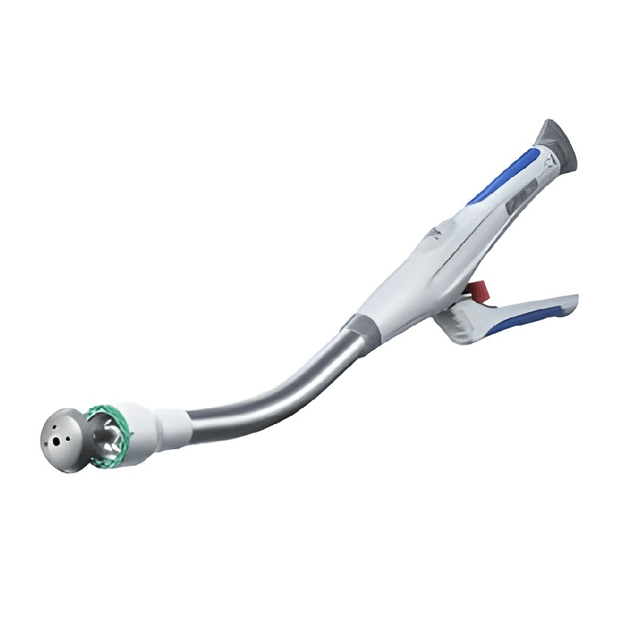Show cart summary: 0 Items
Please Add Some Items
- Home
- Blogs
- Surgical Stapler
- Evolution of Surgical Staplers! - Smart Medical Buyer
- Evolution of...
Evolution of Surgical Staplers! - Smart Medical Buyer
- By Surgical Staplers
- • Jan 16, 2023

Stitching up an incision so that the skin heals underneath is an ancient practice. It allows internal surgical operations for complex medical issues. With advancements in medical technology, suturing is getting replaced by surgical staplers.
After surgery, surgical staplers are used to join the two severed layers of skin. They can be stapled more quickly than stitching sutures. In addition, when compared to sutures, surgical staples minimize the local inflammatory response, wound diameter, and time to close.
But do you want to know the history behind these surgical staplers? Let us narrate it to you right now.
Humer Hultl's Invention
Christian Albert Theodore Billroth and William Stewart Halstead were two scientists in the 1800s who were experimenting with various methods to sew surgical wounds. However, the eureka moment belongs to Hungarian surgeon Humer Hultl. He invented the first workable surgical stapler.
This instrument places two sets of steel staplers on either side of the fascia. Hultl used the device for a distal gastrectomy on the stomach and duodenum. As matter of fact, the three principal staple designs are still used today in operation rooms. These are B-shaped configurations of closed staples, double-staggered rows, and fine wire material.
However, this surgical stapler was heavier in weight. In addition, its assembly was cumbersome in a long due process. Therefore, the design desperately needed improvement.
Alador von Petz Improves the Surgical Stapler
Dr Aladar Von Petz expanded on this idea and invented a new surgical stapler based on Hultl's concepts. It eventually gave way to the contemporary stapler. He was also a Hungarian surgeon.
Petz's design included silver staples in two parallel rows of one jaw. On another jaw, anvil grooves completed the stapling process. It became popular in the medical industry as the Petz clamp.
Although easier to use than the Hultl design, the Petz clamp weighed seven pounds. For long-term use, a more portable, reusable solution was better.
Dr H. Friedrich's Stapler Cartridge
Dr. H. Friedrich of Germany accomplished a further development milestone for surgical staplers. He introduced a preloaded, refillable stapler cartridge. This instrument is identical to office staplers.
Nonetheless, surgical staplers were not widely popular. Their use was limited only to necrotizing pressure but not fresh, living tissue. If a surgeon wanted to use surgical staplers, he had to remove them after some time and sew the incision. As a temporary measure, it was not a practical approach.
Russian Surgical Staplers
In the 1940s, the USSR formed the Scientific Institute for Experimental Surgical Apparatus and Instruments in Moscow. As the name suggests, this organization started patenting and designing surgical staplers for the Russian healthcare industry.
Their first device was the vascular stapler in 1951. For other internal organs, specific devices were made with a unique design. However, the Russian staplers were not easy to handle. They had a pre-assembly routine before the surgery.
United States Developments
American medical professionals bought the license from the Russian patent in 1967. Due to cost issues, they started manufacturing their lightweight, reusable staplers. A superior modification was the preloaded and removable stapler cartridges that came in varying sizes and patterns.
After attending a medical conference in the USSR, Mark M. Ravitch took a sample of a stapling device and showed it to entrepreneur Leon C. Hirsch. He created the United States Surgical Corporation in 1964 to manufacture surgical staplers under the Auto Suture brand.
In 1978, Johnson & Johnson's Ethicon presented the first disposable stapling device. They took over the market leaving USSC behind. Tyco Healthcare purchased USSC in 1998, which became Covidien on June 29, 2007.
Staplers are used in gastrointestinal procedures such as bowel resections, anastomoses, oesophagogastric surgery, laparoscopic surgery, and gastroplasties. They are also used for male circumcision and are much better than distal incisions. They come in various types like circular, linear, articulating endo, and solid shaft staplers.
Surgical Staplers from The PassBox
The PassBox has a medical-grade premium range of surgical staplers. Shop online at our store for staplers that give better hemostasis and anastomosis.

0 Comment